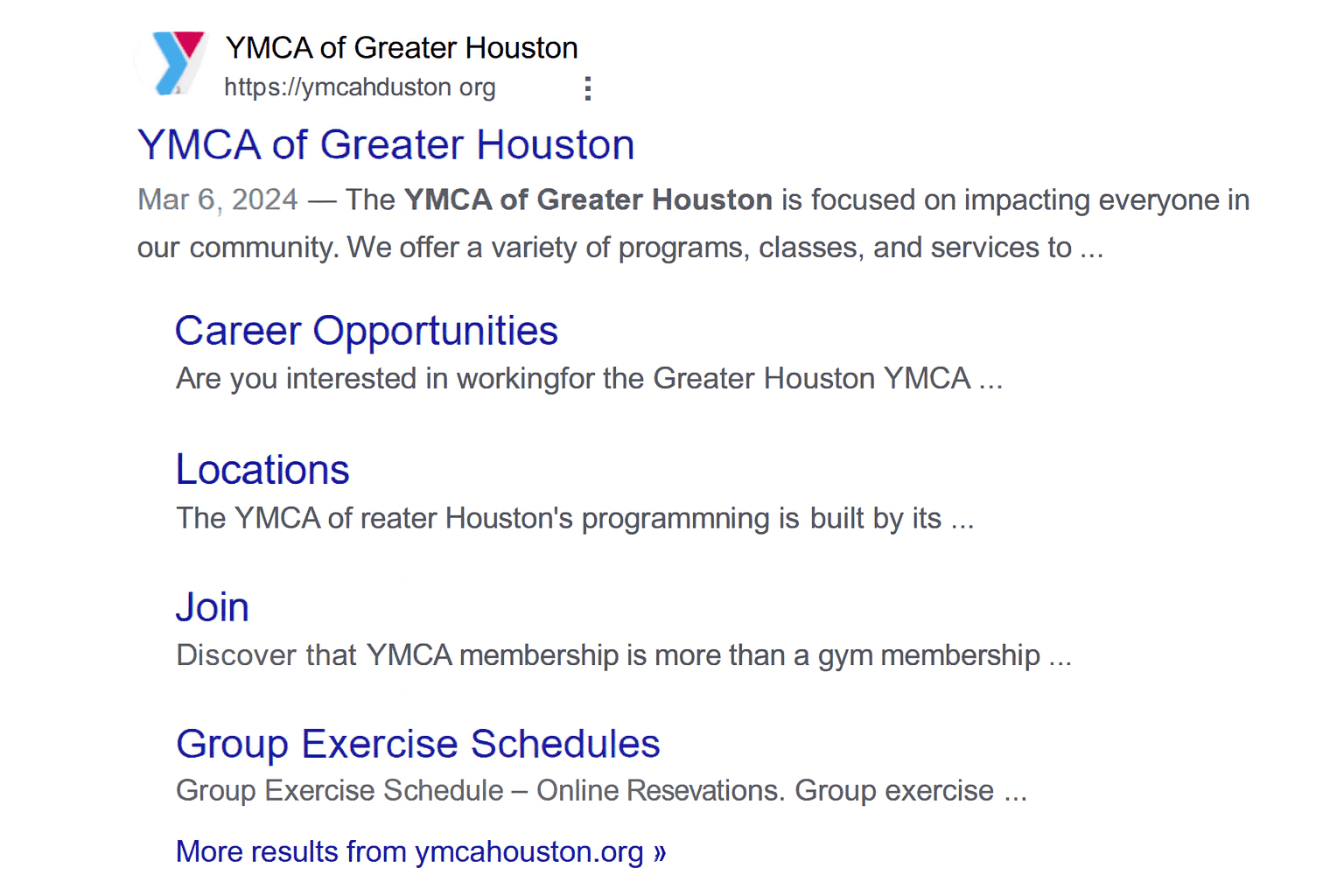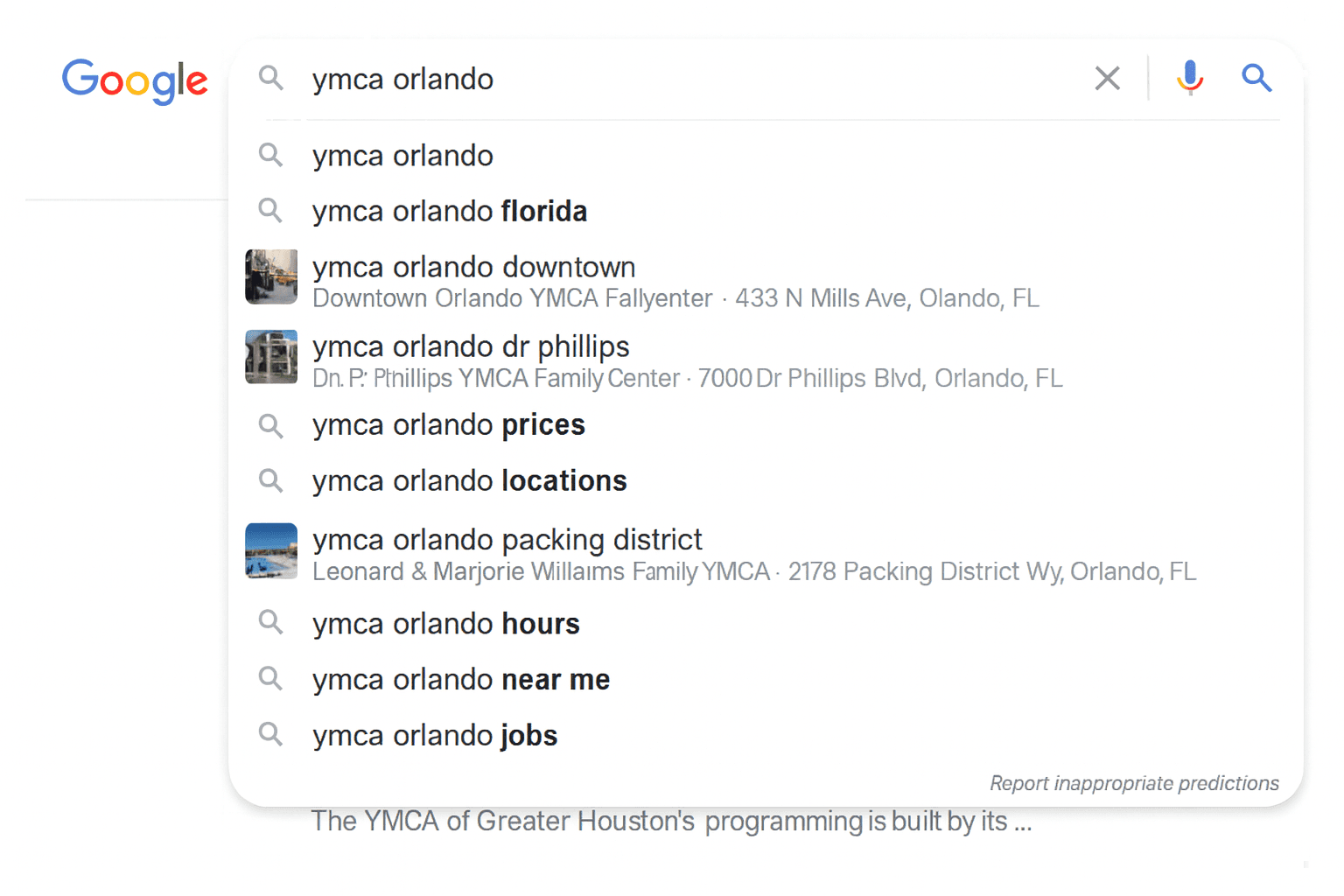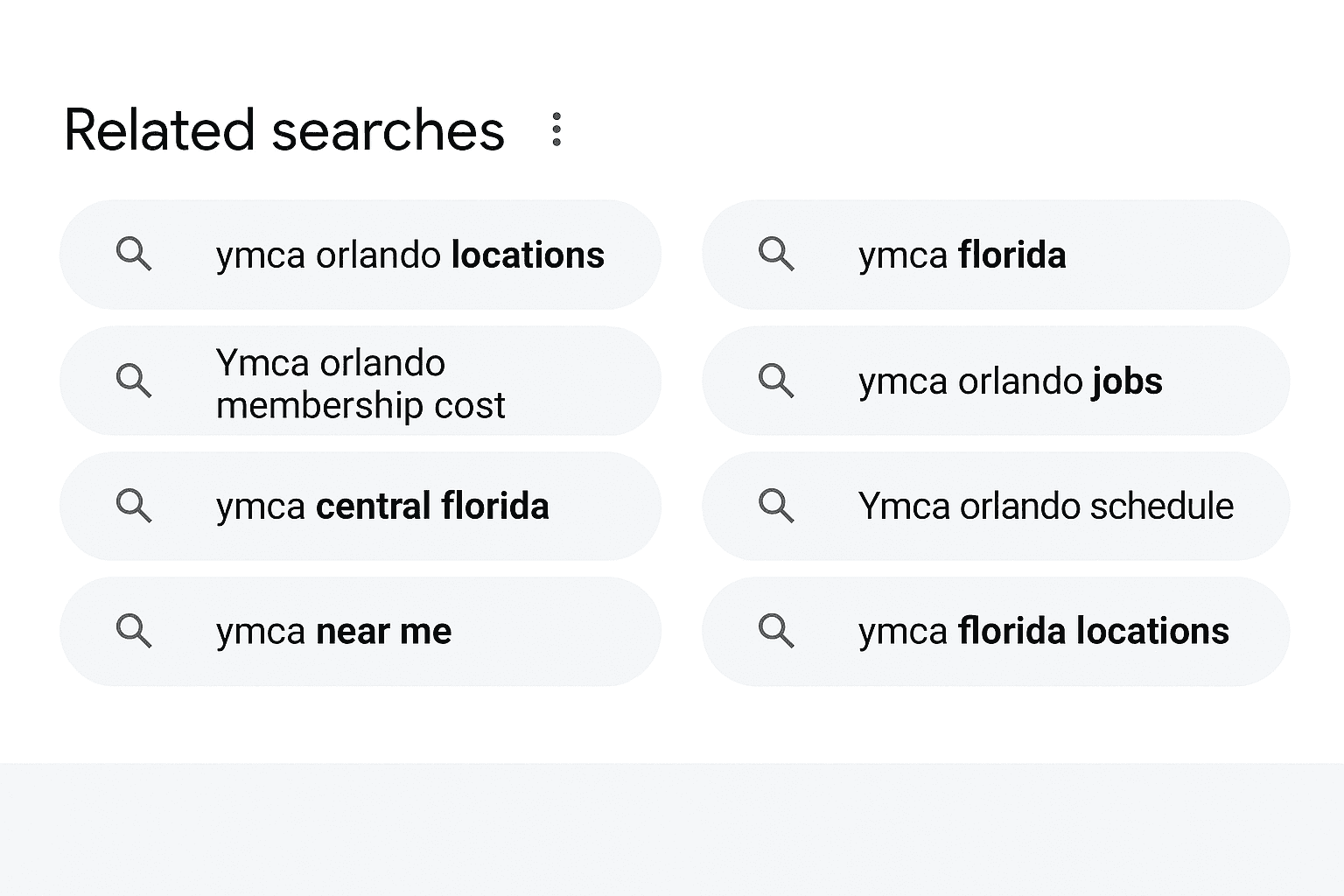

Sharing your organization’s story is the key to driving support for your programs and community. In today’s digital world, creating an online presence is an important part of getting the word out. With smart digital advertising, you can reach volunteers, donors, and engage members quicker than ever, but the cost of those digital ads can rise just as quickly.
Digital advertising can be a very effective method of reaching your community members, but it’s hard to create a meaningful impact with a low (or nonexistent) ad spend budget. That’s where Google Ad Grants comes in.
What is a Google Ad Grant?
Established to help promote helpful and accurate information on the internet, Google’s grant program helps fund digital search ads for nonprofits. Qualifying nonprofits receive up to $10,000 per month of digital ad spend.
Google’s funding for nonprofit organizations has made advertising more accessible. Nonprofits can now create their own ads and use the funding to promote them next to search results. The ads appear when people search for information relevant to your mission or services. This lets you target your messaging and reach the people most interested in engaging with you.
How Do Google Ad Grants Work?
Google Ad Grants are available to any qualifying nonprofit, regardless of size. There’s no spend requirement, but the funds don’t roll over between months.
Each month, you’ll have an ad budget in your Google account where you can manage your ad campaigns. You’ll create your ads independently and add them into your Google account. When someone searches a topic relevant to your nonprofit, your ads will be shown either independently or below the paid ads. Viewers will be able to click through your ads to your nonprofit website if they’re interested.
You can use the ads for a variety of mission-based campaigns, from volunteer recruitment to driving membership sales to maximize revenue. They can also be used to generate donations by connecting visitors straight to your donation platform.
Google Search campaigns reward relevancy in your search ads. You can increase your campaign’s impact by using specific keywords in your ads that directly relate to your brand and mission. Since Google promotes keyword relevancy rather than showing ads with the largest budgets, the program levels the playing field for small nonprofits who may not be able to out-spend the bigger organizations in their region.
How Do I Qualify for Google Ad Grants?
To apply for Google Ad Grants in the U.S., you must be a nonprofit organization with current 501(c)(3) status. If you’re outside the U.S., check your country’s definition for charity status. You’ll also need to register your nonprofit with TechSoup, the organization that handles Google’s nonprofit verification process.
Google wants the ads they fund to promote helpful and accurate information, so you’ll need a website that meets the Google Ad Grant performance requirements. If you’re already keeping your website up-to-date, chances are you already meet the requirements:
- You must be the registered owner of your website domain.
- If you want users to land on an offsite donation page when they click your ad, you must use a domain processor verified by Google.
- Your website must be considered high-quality, secure (with HTTPS), and with content that is substantial and unique to your organization.
- The purpose of your website should not be commercial. If you have limited commercial activities, you must explain how they support your organization.
- You should limit any advertising on your website that isn’t directly related to your mission.
- Google AdSense or other affiliate advertising links are not allowed.
How Do I Apply for Google Ad Grants?
Compared to most grants, the application process for Google Ad Grants is very easy. You don’t have to compete with other nonprofits, and there is no application deadline. But before you submit your application, there are a few prerequisites:
- Register Your Organization with TechSoup. In addition to providing discounted tools and resources to nonprofits, TechSoup has partnered with Google for Nonprofits to verify your eligibility with their validation token. This could take up to 30 days, and TechSoup may contact you for additional information if needed;
- Sign up for Google for Nonprofits. Once you have your validation token, the next step is to enroll in Google for Nonprofits. In addition to the validation token, you’ll need to agree to Google’s statements about donations and nondiscrimination. Also, be prepared to enter your personal contact information and your organization’s information, including tax-ID/EID number;
- Set up Google Analytics on Your Website. With its robust (and free) web-reporting tools, Google Analytics can track your website’s visitors and analyze their behavior. Not only is Google Analytics required to receive your Google Ad Grant, but you’ll also need it to measure its effectiveness;
Once you’ve completed these three steps, you’re ready to apply for your Google Ad Grant.
- Sign into your Google for Nonprofits account and select “Activate” under Google Ad Grants. Fill out the eligibility form and submit it to your organization’s website for review. It’s important to follow the instructions carefully and complete all the requirements in step one and two to receive approval.
- You don’t need to create a new Google Ad Grants account. A Google Ad Grants account will be provided when the activation is completed. During the application process, you’ll choose between Smart Campaigns or the Classic Google Ads account. Smart mode is a much more simplified version, but you should choose the Classic version if you want access to the full suite of tools and options Google provides. (You can always switch campaign modes later.)
WARNING: Never enter billing information when setting up your ads. It isn’t required and can cause serious issues later in the process. - You should also set up conversion tracking on your website. Install Google Tag Manager to set up trackable goals for your website (memberships, donations, volunteers, etc.) By tracking these goals, you can figure out which pages or ads present the most efficient path for your visitors to complete a preferred action.
If you’re starting from nothing, the entire process can take more than a month to complete. It’s important to complete each step correctly to avoid setbacks and delays.
Here is an average timeline to complete each step:

Google updated its Ad Grant policies in 2018 with some important eligibility and management requirements. Here are the most important ones to focus on when setting up your account.
- Account Structure
- Google requires a minimum of two campaigns.
- Each campaign must have at least two ad groups.
- Each ad group must have at least two ads.
- Each ad must have at least two sitelink extensions.
- Keywords
- Single-word keywords are not allowed (unless they are your own branded keywords.)
- Generic keywords are not allowed.
- Keywords with a quality score of one or two are not allowed.
- Performance
- Your Google Ad Grants account must maintain a 5% clickthrough rate (CTR) each month.
- You must have at least one conversion reported in your account each month.
- Program Survey
- You must complete the Google Ad Grants program survey each year.
How to Plan and Build Your Google Ad Grants Campaigns
Now that you know about Google Ad Grants, it’s time to plan and build your first campaign. First, start with a plan. Google Ad Grant campaigns may look like Paid Google Ad campaigns, but you need a different strategy to be successful.
Paid Google Ad campaigns give you access to the full suite of Google Ad products; Search, Display, Shopping, Video, remarketing lists, and expanded access to branded keywords. Paid Ads can also manage budgets without limitations and compete for desired keywords better.
Google Ad Grants aren’t as flexible, and they are held to a higher standard. While it’s hard to find fault with free advertising dollars, a few drawbacks must be considered when planning your campaign.
- Search Ads: Google Grant ads can only deliver text-based ads on the Google search results pages. To take advantage of the benefits of a multichannel digital marketing campaign, you’ll need to create a Paid Google Ad account and invest additional funds for other Google products (Display, Shopping, Video, etc.).
- Budget Limitations: Even though Google provides $10,000 per month, there are some restrictions on how those dollars can be spent. Google limits your bidding to $329 per day, and any money not spent doesn’t roll over to the next day. This means if you don’t receive enough clicks and only spend $250 in one day, you can’t make up the difference by spending $408 the next day. Any money not spent at the end of the day is lost.
- Cost-per-click Limitations: Google sets the maximum cost-per-click bid amount per keyword to $2. This can make competing with paid Google Ads more challenging when keywords cost significantly more than $2 (some as much as 10x more.) Depending on the competition, others may be able to outbid you for top spots around the keywords you really want.
- Ad Placement: Paid Google Ads will always get preferential treatment over Google Ad Grants. This means a grant advertiser will only enter the auction if inventory is still available. And if a paid advertiser bids the same amount as a grant advertiser, the paid advertiser will win the auction and get the higher ad placement.
So, how can you make the most of your Google Ad Grants account with all these limitations? This is where the strategy differs from paid advertising. The most important thing to remember is that you’re working with free money – and if you don’t spend it, it’s gone forever. You must forget metrics like ROI and ROAS and focus on spending ALL of the money every day. It won’t be easy, but here are some strategies that will help.
More Is Better
Google requires you to run at least two campaigns with two ad groups and two ads each. While that’s a great start, you probably won’t be able to use the total budget by sticking with the minimum requirements.
Spend some time combing through your website and list all the areas that can support advertising. Do you have pages for more than one location? Set up campaigns for each. Do you break out each type of program you offer? Set up more campaigns. You should have a campaign for recurring donations, a campaign for one-time gifts, a campaign for volunteers, a campaign for special events. And if your website doesn’t have a page to fully support those or other opportunities, then it’s time to expand your website or develop some landing pages. The more campaigns/ad groups/ ads you run, the closer you’ll get to those free funds.
Maximize the Daily Budget
With $329 to spend every day, many nonprofits will divide the budget equally between each campaign they’re running. If they’re running four campaigns, they’ll set a daily budget of $82.25 for each campaign just like any reasonable person would when running Paid ads.
But these aren’t Paid ads. Remember, Google limits the amount you can spend each day to $329, which means they won’t let you overspend and won’t try to charge you extra. Instead of segmenting the budget and self-limiting your campaigns, set your daily budget for each campaign to the full $329 and let Google optimize the ad spend to the highest performing campaigns.
Use Smart Bidding
We mentioned that Google has a $2 cap on your cost-per-click bids per keyword. Well, that’s not entirely true. Your Google Ad Grant campaign might exceed the $2 bid cap if you use a Smart Bidding strategy.
According to Google, Smart Bidding uses machine learning to optimize for conversions in each and every auction–a feature known as “auction-time bidding.” Once you’ve set up the proper conversion tracking, you can use these three Smart Bidding strategies to break through the $2 bid cap:
- Target CPA: You set the cost you’re willing to pay for the conversion and let the algorithm go to work and get as many conversions as possible at your set price.
- Maximize Conversions: The algorithm brings in as many conversions as possible regardless of the costs.
- Target ROAS: The algorithm analyzes and intelligently predicts the value of a potential conversion and adjusts the bid accordingly. A high-value conversion will receive a high bid, and a low-value conversion receives a lower bid. This prevents you from overspending on less desirable conversions.
Use Ad Extensions
Since Google requires you to maintain a click-through-rate of 5% or higher, it’s important to squeeze every last click out of your campaigns. That’s where sitelink extensions come in. These extra links serve as mini ads within your search results and direct people to specific pages on your website. They also increase the amount of real estate you take up on the search results page, which improves your ads authority and relevance (and CTR.)

We recommend turning off Google’s automated extensions and adding your own to have more control over what displays alongside your ad. Ads can display up to four sitelink extensions, so you should include at least four (preferably more) when setting up your campaigns.
Need some sitelink ideas? Use Google Analytics to see which pages are already popular with your website visitors. Those pages are likely to attract more interest and drive more clicks when people are searching for your organization.
Sitelink extensions aren’t the only type of ad extensions you can use to your advantage. Call extensions, location extensions (served through your Google Business Profile account), and callout extensions may also help your campaigns.
Set Up Automated Rules
To keep search results relevant, Google requires your Ad Grant keywords to maintain a high-Quality Score, and they can suspend your account for using keywords with a Quality Score of one or two. But who wants to check their campaigns daily for low-quality keywords?
The solution is to set an automated rule in Google Ads to pause any keyword if the Quality Score drops to a two or lower. You can even ask the system to send you an email when the rule is implemented. If you reach a point where your keywords are frequently being paused, it may be time to start digging for some fresh, new keywords.
If you need help figuring out the best search terms for an ad group, there are many free keyword research. Here are a few:
- Google Keyword Planner: Provides a way to research new keywords related to your business and view estimated monthly searches and the cost to target them. And it’s free to use with any Ad Grant account!
- Google Search Suggestions: It appears as a dropdown box as you type in the Google search bar.
- Google Related Searches: Shown at the bottom of the Google search results page.
- Google Trends: Shows search volume for your city or region, as well as any seasonal fluctuation.
- AnswerThePublic: An effective keyword tool that combines your main keywords with various question words (like who, what, why, etc.). You also get some keyword ideas through “preposition” and “comparisons” keywords.
- Keywords Everywhere: The free version is a browser add-on that gives you related keywords and what people also searched for. This way you can fill in your keyword list without leaving Google.
Here’s a tip: Organize keywords by theme. To keep your quality score high and write the most relevant ad copy for your ads and landing page, it’s best to group similar keywords. If your ad group contains keywords like, “high school volunteer opportunities near me,” “community service near me for students,” and “donations to local food bank,” it will be challenging to write ad copy that relates to all three keywords.


Keep Score
Quality Score, that is. Sometimes your keywords appear to need higher bids. And nothing affects how much you pay per click, or which search position your ad appears in more than your Quality Score. Measured on a scale of 1-10, your Quality Score is a relative measurement of how relevant and useful your ad is to someone searching for your keyword. Basically, the higher your Quality Score, the lower your cost per click.
How Google Determines Your Quality Score
Google bases your Quality Score on three factors:
- Expected clickthrough rate (CTR)
- Ad relevance
- Landing page experience
Your Google Ad Grant account can show how well these factors are performing and which could use some improvement (rated “Below Average” or “Average.”) Try experimenting with more relevant or compelling ad copy and different calls to action or refining your keyword match types to avoid irrelevant search requests. You should also review your landing pages to keep their content targeted to each ad group. Optimize landing page load time for both mobile and desktop. Even excellent content can be ignored if your pages load too slowly.
How To Maintain Your Google Ad Grants Account
You’ve set up your Ad Grant account, built your campaigns, researched all the keywords, and everything is running on autopilot, right? Not so fast. You’ll need to provide plenty of care and attention to get the most bang for your (free) buck and keep your account compliant. Google requires you to log in to the account at least once each month.
But to encourage better performance, you’ll need a more regular maintenance plan:
- Choose a Captain: It’s okay to have help running your campaigns, but you need to choose one person to take full responsibility. Choose a team captain to have the final word on updates and 9 changes to keep ads consistent and compliant. They’ll also need to stay updated on policy changes and new strategies.
- Follow a Schedule: Calendars, lists, and reminders! Whatever your preferred project management tool, keeping up with important tasks is always easier if you set a schedule. We recommend looking at the account every other week on average and planning a deep dive twice each year.
- Create a Style Guide: Campaigns can become complex, and you may not always be the person managing them. And, let’s face it, over time we can forget things. That’s why we recommend creating a style guide for your Google Ad Grant account. This can be like your organization’s style guide but should include details specific to your account:
- How the account is structured
- Keywords to include (and avoid)
- Campaigns with a high priority or require more attention
- Ad copy guidelines
- Targeting data to include (or avoid)
- Test, Test, Test: Remember, your Google Ad Grant funds are FREE MONEY. So, why not put it to good use? Your Ad Grant account is the perfect place to run A/B tests on new ad copies, headlines, images, calls to action or landing pages. You can also test completely different campaigns against each other. Google has even made it easier to set up and run ad experiments.
How to Reactivate a Suspended Google Ad Grant Account
Since Google updated its policy in 2018, it’s become more common for nonprofits to have their Google Ad Grants suspended. The easiest way to meet compliance requirements is to spend time reviewing your data and testing new ideas. This will ensure you catch potential compliance issues early and correct them before they become a serious offense.
But don’t panic if your account is suspended. This is a temporary situation, and the Ad Grant support team will help you reactivate your account quickly. If you receive an account suspension alert email, take a minute to breathe, grab a cup of coffee (or a glass of wine–we don’t judge), and follow these steps.
- Check the Suspension Alert Email: It should include the reason your account was suspended, though it may lack some specifics. If you have trouble pinpointing the reason for the suspension, review the Google Ad Grants Policy Compliance Guide. Update any areas where your account may be out of compliance, even if it isn’t mentioned in the suspension alert. The 5% average clickthrough rate and generic, single, and low-quality keywords are common issues for many nonprofits, so you’ll want to give more attention to meeting those requirements.
- Call Google Ad Grant Support: Once you’ve found and corrected every policy violation, contact the Ad Grant support team. You can submit the Request to Reactivate Ad Grants Account form, but you may get a quicker (and more helpful) response by calling the Google Ads hotline at 1-866-246-6453. Have your Google Ads customer ID handy. And if you’ve been unable to find the source of your suspension, the support team may be able to help you narrow it down.
- Submit Your Account for Re-Review: The Ad Grant support team will inform you of any outstanding policy violations and provide the necessary steps to correct them. Contact support again when you’ve addressed every compliance issue and let them know you’re ready for a re-review. They will submit your account for a final review and re-verification.
- Patience Is a Virtue: As mentioned before, account suspensions have become more frequent, and the Google Ad Grant Support team has a high volume of requests. The re-verification process can take 10-15 days, and there’s no benefit in trying to escalate your case. You’ll receive another alert from Google Ads once your account is activated.
- Avoid Future Suspensions: When your Google Ad Grant account is suspended, it not only takes time to reactivate it, but you also lose weeks of advertising. Also, Google can permanently cancel your account if you repeatedly break their program policies. To avoid the headaches, put a regular account maintenance task on your calendar, and include all the compliance issues associated with keywords and CTRs. The goal is to catch violations early, avoid suspension, and keep your account running like a well-oiled machine.
In summary, the journey to unlocking the potential of Google Ad Grants begins with understanding its power in amplifying your nonprofit’s message. Google Ad Grants can be an excellent tool for your nonprofit organization to increase your online exposure substantially. The $10,000 budget for online advertising can boost your brand recognition, drive donations, and attract new members and volunteers. And though creating a winning ad campaign can be tricky, the benefits of the Google Ad Grant far outweigh the challenges.
Embrace the Power of Data
The information in this guide should help your organization get started–or back on track – with this fantastic source of free traffic. But if you find your organization doesn’t have the time or ability to manage your Google Ad Grant account properly, the Daxko team is here to guide you every step of the way. Schedule a demo with us to learn how you can leverage Google Ad Grants for your unique nonprofit needs.

So, you got a Google Ad Grant – now what?
Discover the creative ways you can use your Google Ad Grants to increase awareness and engagement for your organization. Download the Google Ad Grant Playbook to learn:
- Which ad campaigns to use
- How to create an ad
- How to optimize your ads
Subscribe to our blog
Curated trends and resources, right to your inbox.
You Might Also Like

Accelerate Your Mission: Empowering Non-Profit Development Officers with Daxko's Fundraising Enhancements

Daxko Announces Rudy Nieto as Chief Revenue Officer and Wendy White as Chief Marketing Officer
